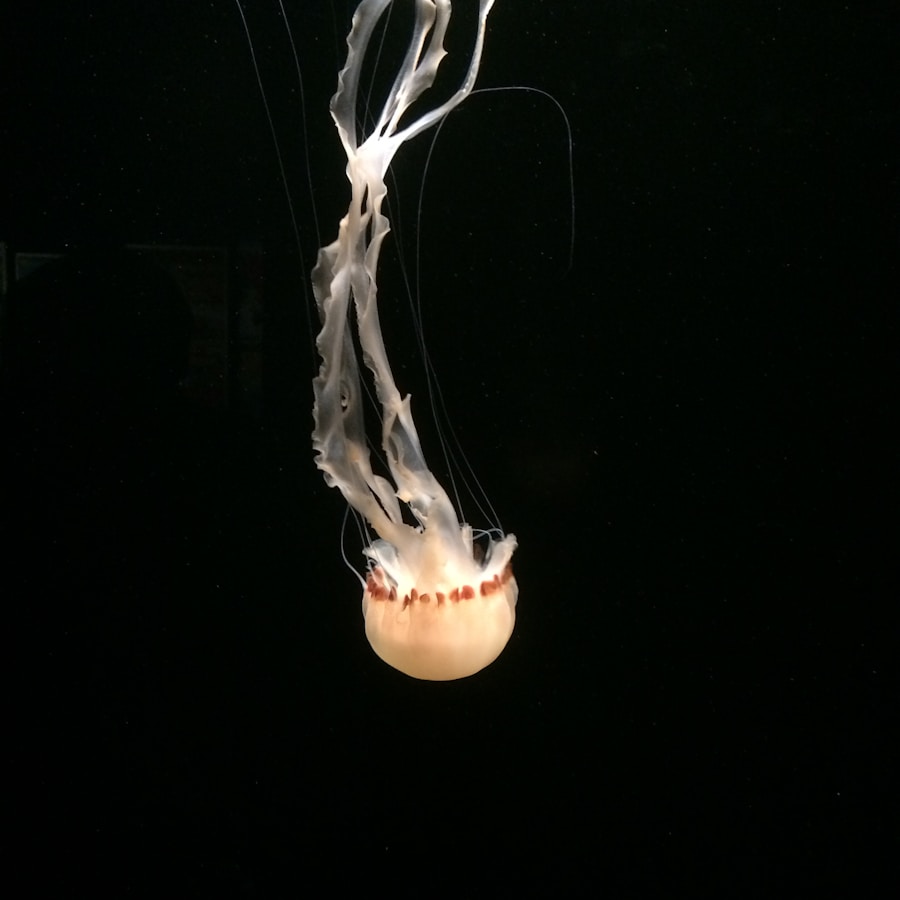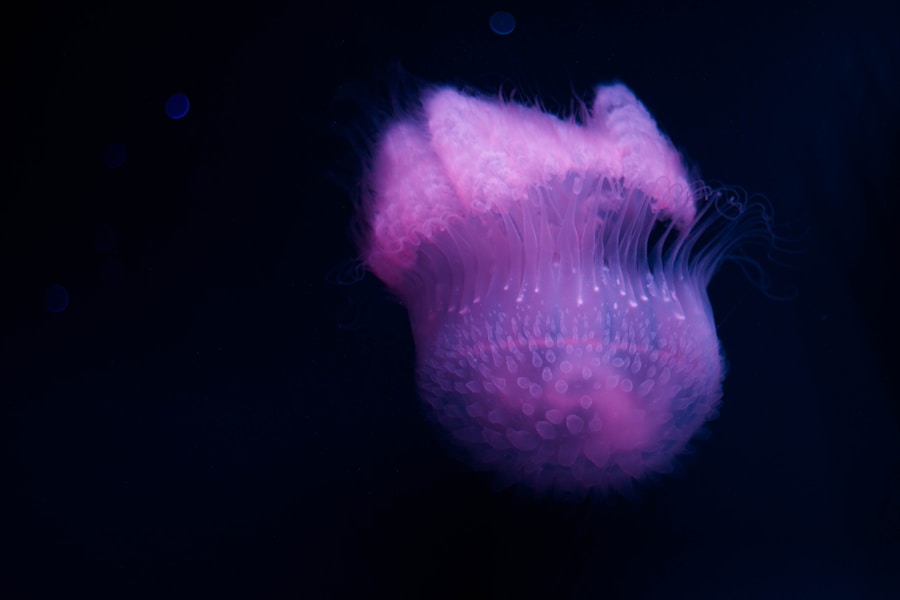Download links
How to install The Mysterious World of Angler Fish APK?
1. Tap the downloaded The Mysterious World of Angler Fish APK file.
2. Touch install.
3. Follow the steps on the screen.
Description
Angler fish, a term that evokes images of the deep, dark ocean, are among the most fascinating and bizarre creatures inhabiting the depths of the sea. These fish belong to the order Lophiiformes, which encompasses over 200 species, each exhibiting unique adaptations that allow them to thrive in their extreme environments. Found primarily in the deep-sea regions, angler fish are renowned for their distinctive hunting methods and peculiar physical characteristics.
Their name derives from a unique feature: a bioluminescent lure that dangles from their heads, resembling a fishing rod. This lure is not merely for show; it plays a crucial role in attracting prey in the pitch-black waters where these fish reside. The angler fish’s adaptations are not limited to their hunting techniques.
They have evolved to survive in some of the most inhospitable environments on Earth, where light is scarce and food is often hard to come by. Their unusual morphology and reproductive strategies have captivated scientists and enthusiasts alike, making them a subject of extensive research and fascination. As we delve deeper into the world of angler fish, we will uncover the intricacies of their anatomy, mating habits, habitat, bioluminescent features, and their representation in mythology and popular culture.
Key Takeaways
- Angler fish are deep-sea predators known for their unique appearance and bioluminescent lure.
- The anatomy of angler fish includes a large mouth, sharp teeth, and a bioluminescent lure on the end of a modified dorsal fin.
- Angler fish have a unique mating habit where the much smaller male fuses onto the female, eventually losing its eyes and internal organs.
- Angler fish are found in the deep-sea habitat, often at depths of over 3,000 feet, where they use their bioluminescent lure to attract prey.
- The bioluminescent adaptations of angler fish allow them to attract prey in the dark depths of the ocean, making them highly effective predators.
The Unique Anatomy of Angler Fish
Body Structure and Size
One of the most striking features of angler fish is their elongated bodies, which can vary significantly in size depending on the species. Some angler fish can measure just a few inches long, while others can grow up to three feet in length.
Unique Skin Texture and Camouflage
Their bodies are often covered in a layer of soft, gelatinous skin that allows them to withstand the immense pressure found at great depths. This unique skin texture also aids in camouflage, helping them blend into their surroundings and evade predators.
Specialized Features for Hunting
The most iconic anatomical feature of angler fish is undoubtedly the illicium, or lure, which protrudes from their heads. This modified dorsal fin is equipped with a bioluminescent organ known as the esca, which emits light to attract prey. The lure can be moved independently, allowing the angler fish to mimic the movements of small creatures, further enticing unsuspecting prey. Additionally, angler fish possess large mouths filled with sharp teeth that can capture and hold onto prey with remarkable efficiency. Their stomachs are highly elastic, enabling them to consume prey that is much larger than themselves—a crucial adaptation in an environment where food scarcity is common.
The Mating Habits of Angler Fish

The mating habits of angler fish are as peculiar as their physical characteristics. In many species, sexual dimorphism is pronounced; females are significantly larger than males. This size difference plays a critical role in their reproductive strategy.
Males are often much smaller and have evolved a unique method of finding mates. When a male encounters a female, he will latch onto her body using his specialized teeth. This attachment can last for days or even weeks, during which time the male becomes increasingly dependent on the female for sustenance.
Once attached, the male’s body undergoes significant changes. He essentially becomes a parasitic extension of the female, losing his ability to swim independently and relying on her for nutrients. This extraordinary adaptation ensures that when the female is ready to spawn, she has a mate readily available.
The male’s body fuses with the female’s, allowing him to share in her reproductive success without the need for constant searching for a partner. This fascinating reproductive strategy highlights the extreme adaptations that angler fish have developed to ensure their survival in an environment where finding a mate can be particularly challenging.
The Deep-Sea Habitat of Angler Fish
| Species | Depth | Temperature | Pressure |
|---|---|---|---|
| Angler Fish | 200 to 2,000 meters | 2 to 4 degrees Celsius | 20 to 60 MPa |
Angler fish predominantly inhabit the deep-sea regions of the world’s oceans, typically found at depths ranging from 200 meters (656 feet) to over 2,000 meters (6,561 feet). These depths are characterized by complete darkness, extreme pressure, and cold temperatures, creating an environment that is inhospitable to many other forms of life. The deep-sea habitat presents unique challenges for survival, including limited food sources and harsh living conditions.
However, angler fish have adapted remarkably well to these circumstances. The deep-sea environment is often described as one of Earth’s last frontiers due to its relative inaccessibility and the mysteries it holds.
Their bioluminescent lures not only attract prey but also serve as a means of communication among individuals in the vast emptiness of the ocean. Additionally, their ability to consume large prey items allows them to take advantage of sporadic food availability. The deep-sea habitat also influences their growth rates and life cycles; many species exhibit slow growth and long lifespans due to the scarcity of resources.
The Bioluminescent Adaptations of Angler Fish
Bioluminescence is one of the most captivating adaptations found in angler fish, serving multiple purposes that enhance their survival in the deep sea. The light emitted by their lures is produced through a chemical reaction involving luciferin and luciferase enzymes. This bioluminescent capability not only attracts prey but also helps angler fish communicate with one another in an environment devoid of natural light.
The ability to produce light is not exclusive to their lures; some species exhibit bioluminescence across their bodies, further enhancing their camouflage against predators. The lure’s light can vary in intensity and color depending on the species and environmental conditions. Some angler fish emit a bluish-green light that penetrates deeper into the ocean’s depths, making it particularly effective for attracting prey that may be sensitive to specific wavelengths of light.
This adaptation is crucial for survival in an environment where visibility is limited and competition for food is fierce. Furthermore, bioluminescence can also serve as a defense mechanism; some species can produce bursts of light to startle predators or distract them long enough to escape.
The Role of Angler Fish in Mythology and Popular Culture

Angler fish have captured human imagination for centuries, inspiring myths and stories across various cultures.
In some cultures, they are seen as omens or representations of the unknown depths of the ocean—an embodiment of nature’s more fearsome aspects.
Their bioluminescent lures have been likened to sirens or other mythical creatures that lure sailors into treacherous waters. In modern popular culture, angler fish have made appearances in various forms of media, from documentaries showcasing their bizarre lifestyles to animated films where they are often depicted as quirky or menacing characters. One notable example is Pixar’s “Finding Nemo,” where an angler fish character serves as both a source of fear and fascination for the protagonists.
Such portrayals highlight humanity’s ongoing fascination with these enigmatic creatures and serve as a reminder of the wonders that lie beneath the ocean’s surface. The allure of angler fish extends beyond mere entertainment; they also play a significant role in scientific research and conservation efforts aimed at understanding deep-sea ecosystems. As scientists continue to explore these mysterious habitats, angler fish remain emblematic of the incredible diversity and adaptability of life on Earth, reminding us that even in the darkest corners of our planet, life finds a way to thrive against all odds.
If you’re interested in learning more about the art of online fishing, you should check out this article on mastering the art of online fishing with Taya365. Just like angler fish use their bioluminescent lure to attract prey, online fishing involves using various tactics to lure in unsuspecting victims. This article provides valuable insights and tips on how to navigate the online fishing world successfully.
FAQs
What is an angler fish?
An angler fish is a deep-sea fish known for its unique appearance and hunting method. It has a large head with a wide mouth and sharp teeth, and a bioluminescent lure that it uses to attract prey.
Where do angler fish live?
Angler fish are found in the deep waters of the Atlantic and Antarctic oceans, as well as in the waters around Australia and New Zealand. They typically live at depths of 200 to 2,000 meters.
How do angler fish catch their prey?
Angler fish use a bioluminescent lure, called an esca, to attract prey in the dark depths of the ocean. When a smaller fish or crustacean approaches the lure, the angler fish quickly snaps its jaws shut, capturing its prey.
What do angler fish eat?
Angler fish are carnivorous and primarily feed on small fish, crustaceans, and other invertebrates. They are opportunistic feeders and will eat whatever prey is available in their deep-sea habitat.
Are angler fish dangerous to humans?
While angler fish are not typically dangerous to humans, they have been known to bite when handled. Their sharp teeth and powerful jaws can cause injury, and some species also have venomous spines.
How do angler fish reproduce?
Angler fish have a unique mating behavior where the much smaller male fuses to the body of the larger female, eventually losing its eyes and internal organs and becoming a permanent parasite. This allows the male to provide sperm to the female whenever she is ready to spawn.





